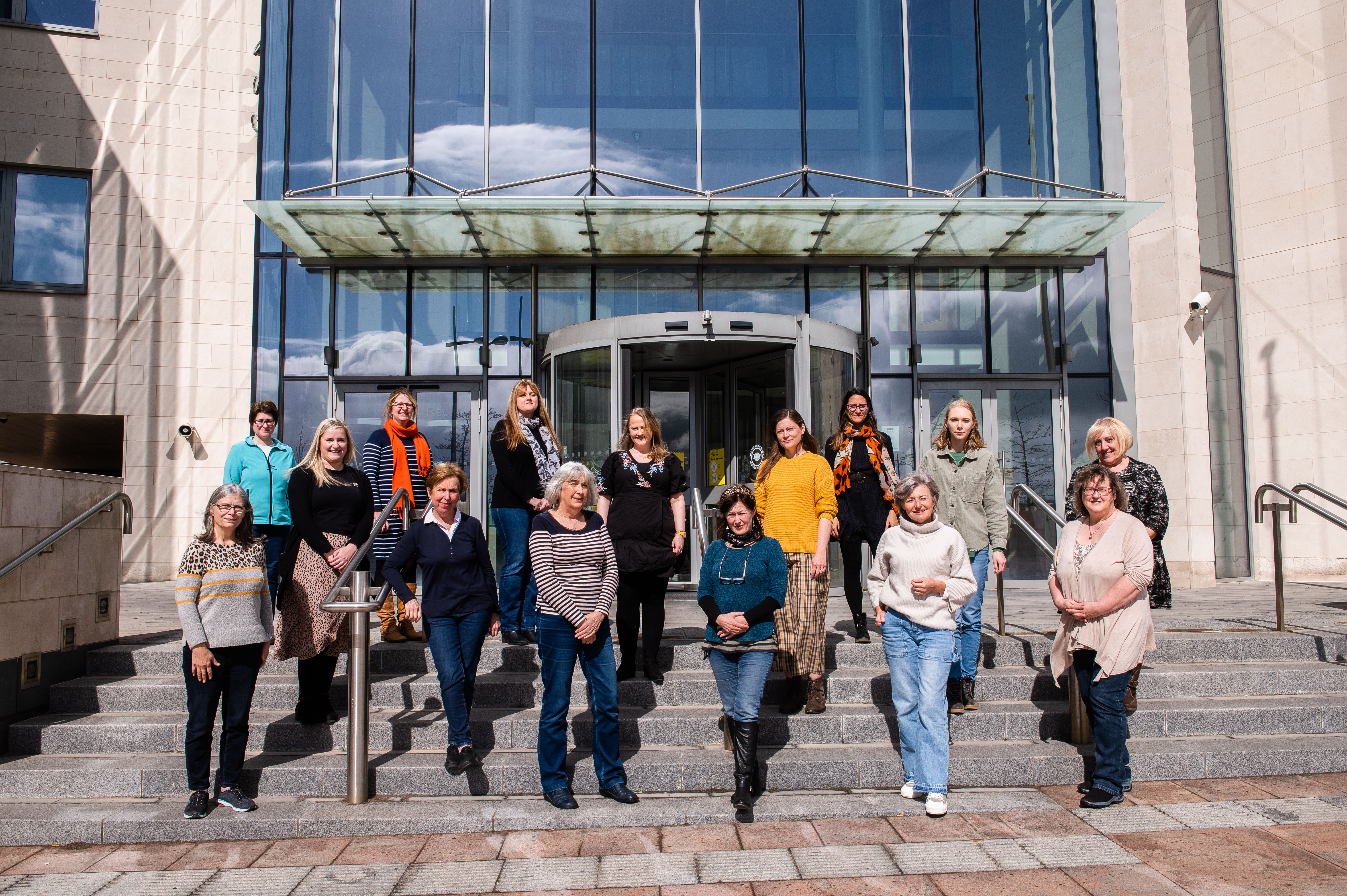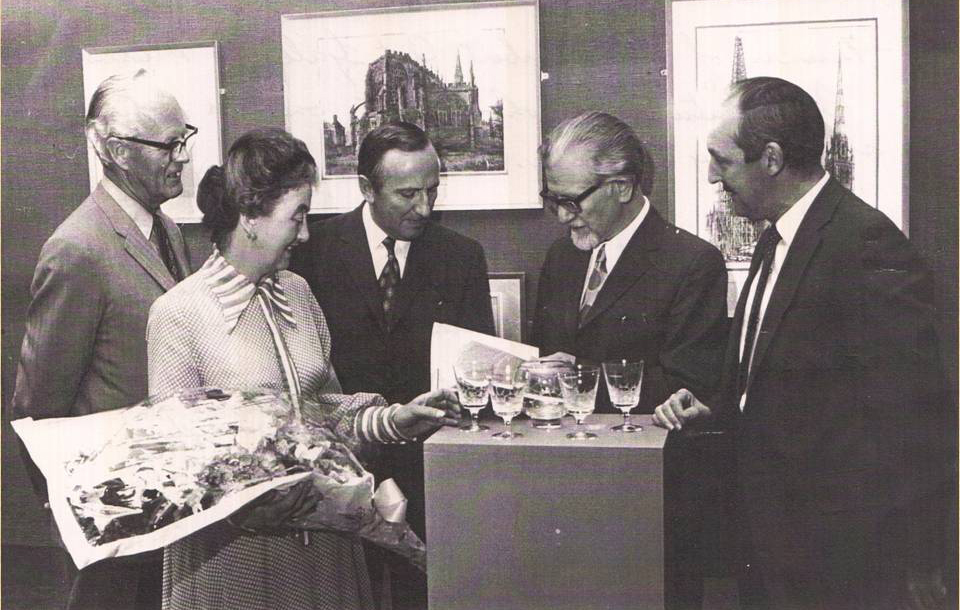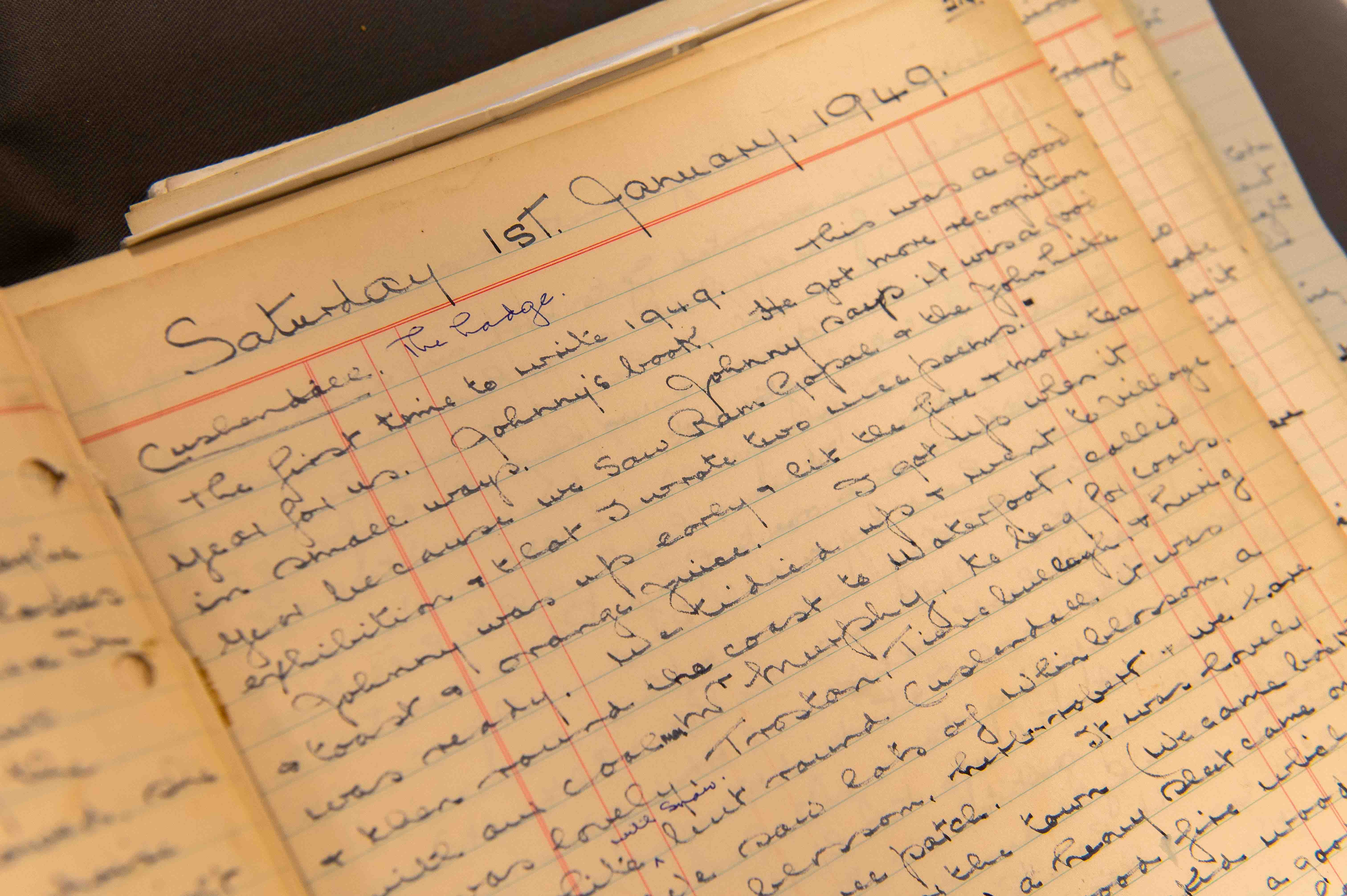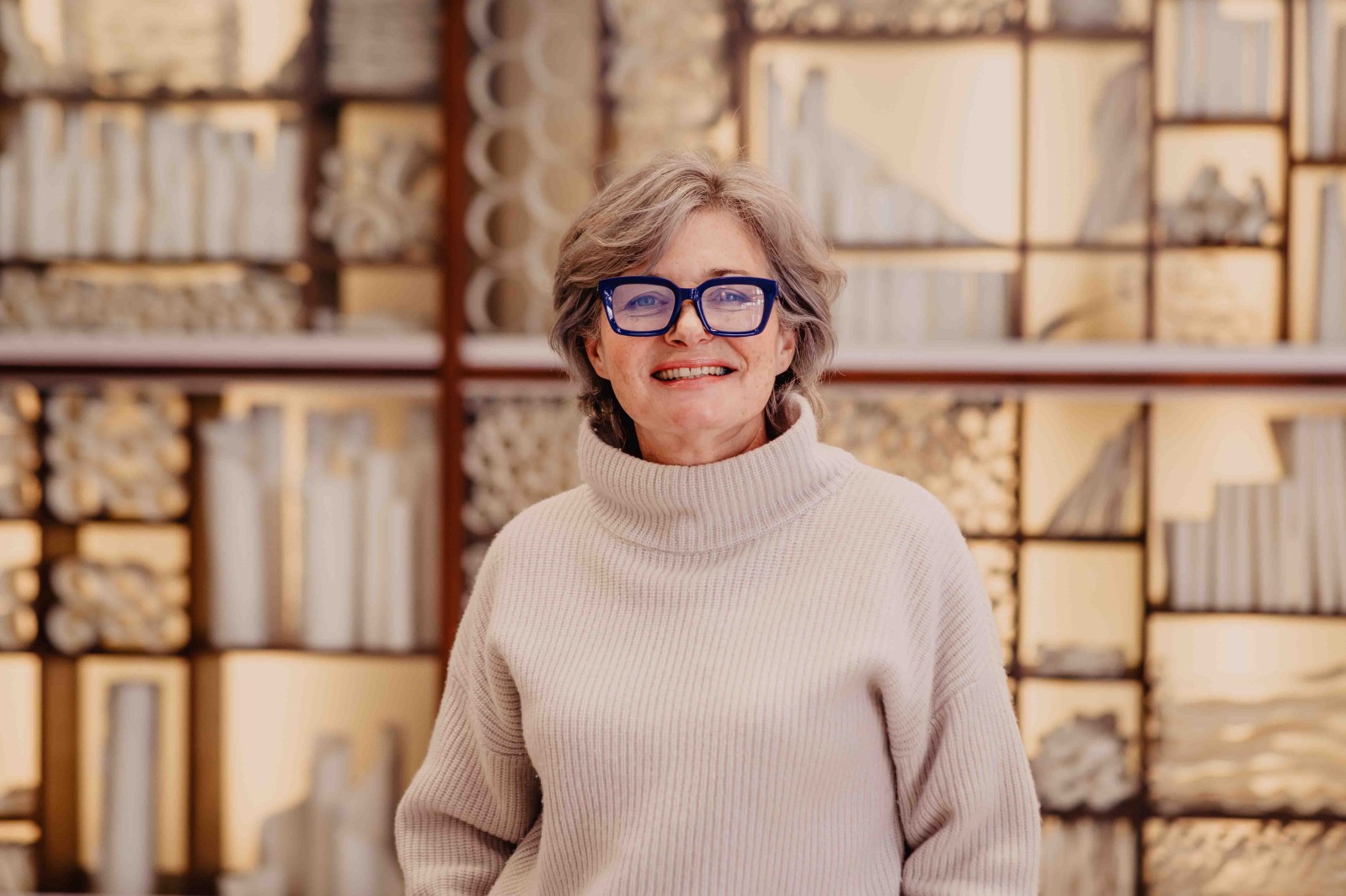What was it like to be part of a mid-20th century art and literary circle in Belfast?
A room filled with conversation, teacups clatter in saucers and glasses ting. Wise, witty, even pompous statements punctuate discussions. All this takes place through coils of cigarette and pipe smoke. This was the world that was familiar to Roberta, the wife of the poet and museum curator John Hewitt.
I entered this circle through reading the diaries Roberta started writing in 1947. They form part of the Hewitt archive held in PRONI. Her words chronicle gallery visits, evenings at the theatre, meetings with artists, writers and poets and much more. Few things escaped Roberta’s keen observation and she wrote much of it down. Through the diaries, you can experience her world.
I did so as part of the brilliant CollabArchive project organised by PRONI in tandem with the Nerve Centre. Its aim is to uncover hidden people and narratives in PRONI’s impressive collection. There are endless opportunities for discovery, and anyone can get involved.

Roberta’s diaries give a very personal perspective on the world and work of John Hewitt. But they also focus on her presence in it. Until now, she was known as John’s spouse and overshadowed by his reputation. The dairies introduce us to Roberta’s vibrant character, and it is a pleasure to meet her. We can also discover the part she played as John’s muse, supporter and intellectual partner.
Roberta married at a time when a wife's role was a homemaker, mother and helpmeet. Society expected women to defer to their husbands. As such Roberta supported John’s career progression and poetry writing. But she was so much more, she was witty and clever, and could judge a character with alacrity. Roberta had social, literary, community and intellectual interests and very independent opinions. Despite constant concerns about their finances the Hewitts had countless opportunities to socialise. Through John she met diverse personalities at professional events in the more formal Belfast art scene. Yet, the diaries are far from a dry appointment record. Roberta gives us many sparkling descriptive vignettes. These add colour through succinct, candid, sometimes naughty and often very funny pen sketches of those she met.
The following are some characters who have come to life through Roberta’s observations. The often-pithy words convey her enjoyment of their delicious quirks and affectations. She also portrays a sense of people's fragility. For example, she was fond of the young poet Hugh Montgomery. But when he visited the Hewitt's home, Roberta recognised his self-absorption. She understood too that he was keen to make knowing declarations in John’s company. Taking himself very seriously, Montgomery had assumed the demeanour of an anguished creative. Hugh, Roberta wrote “… is suffering from poetitis & he is in a difficult mood & really worried. Firstly he doesn’t look well & secondly he talks loudly & makes positive statements like one who hopes he is right.”

Poetitus - what a terrific word! She understood the vulnerability of youth but even the giants didn’t escape her mischievous remarks. The theatrical vanity (or insecurity) of the great actor, dramatist and poet Micheál Mac Liammóir gave her fodder. Roberta notes that the esteemed thespian was “… unmistakably a great old actor. Not old really. I don’t know his age and he makes up in private so you couldn’t see!”.
No pretension, artifice, humour, posturing or even earthiness escapes her notice. While in hospital for a gynaecological procedure, she was at the mercy of a perambulating fellow patient. The woman generously shared some uninvited medical insights. I grimace at the thought of being in that captive audience. “… Mrs. McCluskey who sits up in bed smoking with large gold hoops of earrings in a dirty pink bed jacket. She moves around in the daytime & tells us all about her insides - twenty years ago her ovaries were taken away. Now she says her womb & half of her pipes [are missing] & holding her hand to her navel she says “Och dear, I’m empty, empty from there down.”
The conversational tone of this passage is typical of how Roberta writes. She quotes a playful comment or gives an aside as if you were standing beside her. One quip notes the arrival of artist and teacher, Mercy Hunter McCann to an exhibition. The schoolmistress was leading in her large class of girls from Victoria College. The young ladies, probably uniformed in Lisle stockings and straw boaters were described as ‘swarms of long black legs with hats on top’.
Despite the mischief there is often genuine warmth and affection in her words. Roberta reads as a very affable person who enjoyed socialising. She liked people and it shows. She and John often mixed with well-known poets, academics, painters and writers. Her diaries list people such as John Luke, Brendan Behan, George McCann, Rowel Friers, Frank O’Connor, Austin Clarke, Rebecca West, Louis MacNeice and Colin Middleton. But it wasn’t always the well known who were in their circle. She mentions Herbie Young who worked in the Ulster Museum with John. “Herbie … & his wife came over from Cushendun for tea & we left them back. Herbie is the Carpenter in the Gallery & a socialist. J. [John] is very fond of saying “Only two members of the museum staff read the New Statesman. Herbie the Carpenter & myself.” Herbie is much more intelligent than most members of the staff & his wife is certainly more intelligent than most of the wives of staff.”
The more one reads, the more there is to find. But here is one final vignette from a choice of many. On Stanley Spencer she wrote that the painter had …” a beam that should hurt the musscells [sic] of his cheeks”. Having read her charming description of Spencer I googled a photo to see what he looked like. Roberta was very accurate in her portrayal of his ‘red apple cheeks’ and haircut. She writes he “ ...is a great wee button & what a talker[,] I enjoyed meeting him, but he might become boring – but he is not 5’ [.] I would say a pudding bowl hair do. Surprisingly red cheeks… He is full of beans & told us good stories. Oh: to write of a night’s talk with him would be to write a book. He is interested in other artists’ work – respects J. Luke’s work.
J.[John] said to him that Herbert Read had written that S. Spencer was in line with the great British eccentrics – such as Watts & Blake. [Spencer].. said “if I am compared with Wm. Blake, I touch my forelock & humbly say ‘Thank You’. But where I fumble & flounder & go so wrong, Blake never makes a mistake, he is always safe in the arms of Jesus.”
A delightful picture! It is one that not only captures the diminutive but spirited Spencer, but also gives us a real sense of the author.

There are some things that I have taken from this project. The first is that Roberta’s formerly dormant voice is now being heard and enjoyed. This is not the voice of a deferential mid-century housewife. Exploring her diaries makes it clear that she was often at the heart of discussions. She had sophisticated opinions on the arts, politics, culture and religion. Happily, she wasn’t afraid to express them. Roberta was more than a woman restricted by convention or the expectations of the period. She emerges as an independent spirit.
Another important element is the great value of Roberta’s words. The Hewitts were entwined in the creative landscape of mid-20th century Belfast. Roberta’s diaries add to our knowledge of the cultural activity of this exciting period. Regional identity was being celebrated and there were explorations into more modern approaches to the visual arts. And there is so much more to discover here, such as the time that Brendan Behan came to stay with the Hewitts.
Intrigued? You too can read stories like this as Roberta’s diaries are being digitised through the Collab-Archive project. This will make them accessible online through the PRONI catalogue. They are well worth exploring.
PRONI Reference: D3838/4/2/1 - Bound Volume of Personal Diary 1947-50

The My Experience of Roberta's Diary and Literary Belfast blog by Jennifer McCrea is licensed under Creative Commons Attribution 4.0 International License.
